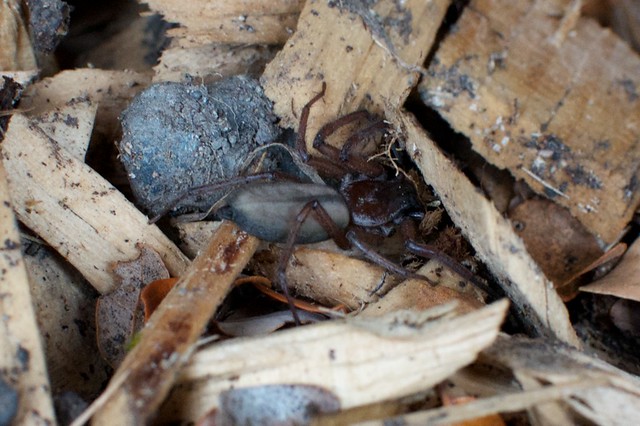RECENT ARTICLES
- CEBRA: An optimised and standardised sampling protocol for BioBlitz
- Stop it people, the plural of anecdote IS data!
- That's no pollinator, that's a flower visitor
- Add a scale to your macro photos
- What to photograph when counting the wild
- Imagine counting the wild on EVERY street in a city!
- My wild counting workflow
- A butterfly flew through
- Why iNaturalist observations without photos can be research grade
- Why you shouldn’t use a spreadsheet for data entry
- All articles ...
The flattened bark spider
I found my first flattened bark spider, one of many New Zealand invertebrates that we know very little about.
written Apr 7, 2014 • by Jon Sullivan • Category: Wild Changes

While taking a lunch break at Klondyke corner, on the eastern edge of Arthur’s Pass National Park, New Zealand, I started peeling bark off an old fallen tree to see what I could find (as you do–or if you don’t, you should, as you can find all sorts of interesting critters). I was surprised to find a remarkably flat spider living in the narrow space between the wood and the old bark.

I’d not seen a spider like it before. Lincoln University entomologist Mike Bowie had, and helped me find the name. It’s Hemicloea rogenhoferi. This is not a native New Zealand species but an Australian species. It was accidentally brought to New Zealand and has successfully naturalised here. It’s now found throughout the country, including some remote wild areas.
I could not find out much about this spider at all on the internet (I had to create a Wikipedia page stub for it). I expect it’s one of the great many invertebrate species in New Zealand for which we have a name but know next to nothing about.
Since then I’ve noted every time I see one of these spiders during my wild counts, but I encounter them very infrequently (probably because they’re so good a hiding away in cracks).